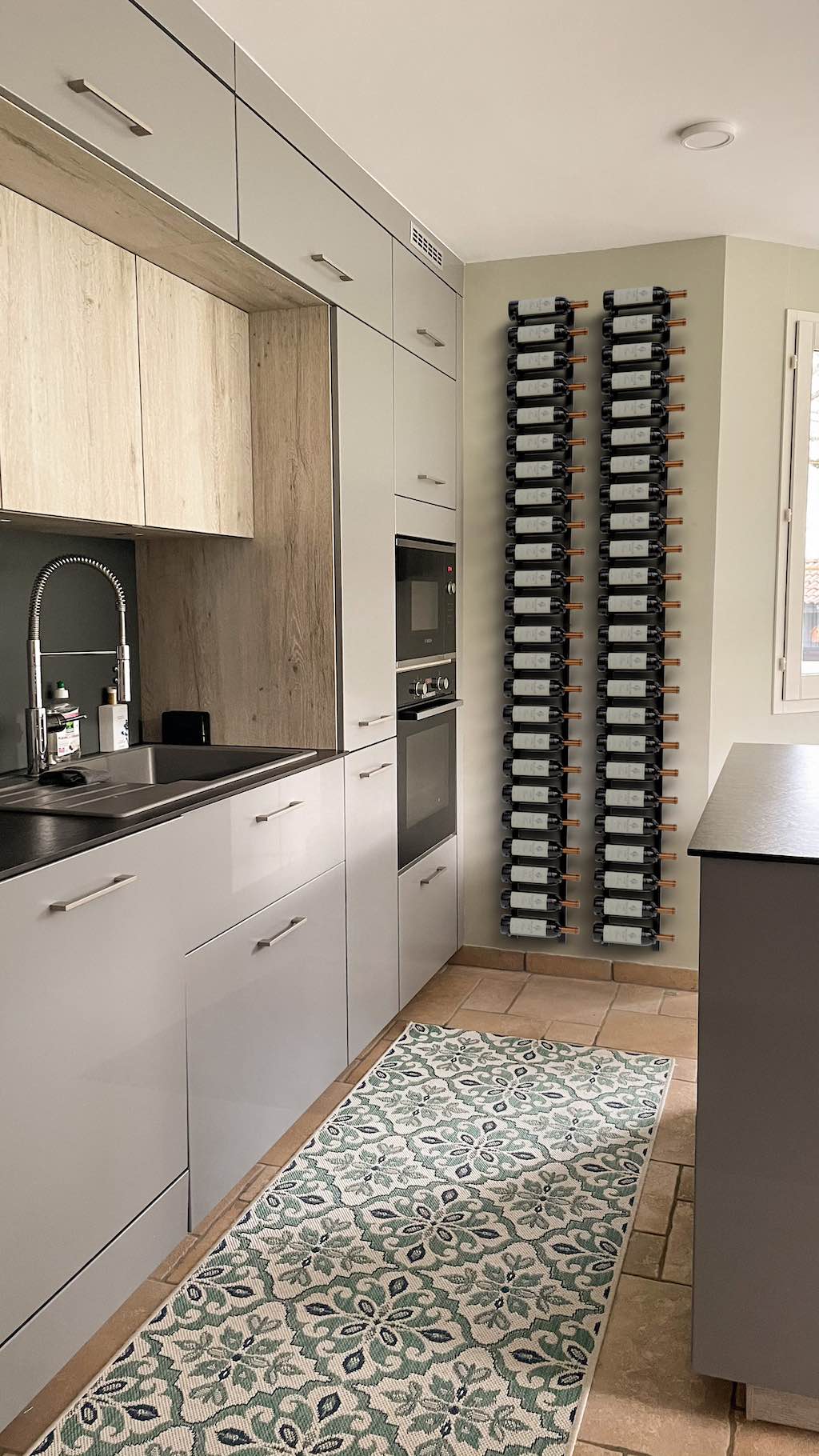A wine cooling system is not a one-size-fits-all concept. It depends on several factors.
Whether it’s a wine feature, collection, or storage, it’s essential to keep your wine in a space where the temperature and humidity are constant. A wine cooling system can be the perfect thing to ensure your wine stays fresh and ages with all its best flavors and aromas intact.
Not all Wine Cooling Systems are created. And, it’s important to know what factors go into wine cellar construction and when choosing the right system.
Knowing how to choose the right cooling system for the proper application will allow you to collaborate with interior designers and contractors as you build your wine cellar better!
Wine Cellar Construction – Design & Materials
To function properly, we start from the ground up and ensure the space is air-tight for our wine cellars. Suitable construction materials for the vapor barrier and insulation of the space are critical before we can start looking at cooling systems.
The quality of insulation in the walls and the floors is a factor when we do our heat load calculations. These days in-floor heating is a common obstacle that needs to be considered when designing as it will significantly affect the climate control of the space.
Wine features enclosed in glass and glass doors need to be thermopane glass and be tightly sealed to ensure a closed and controlled environment.
Environmental Factors to Consider
Choosing the right cooling system comes down to having the right information. Thankfully, we have a handy Cooling System Calculator that will recommend the ideal system for your wine cellar project.
Here is the key information you’ll have to know to get started.
Size of the Space – each system has a maximum cooling capacity. The larger the room, the larger the system that will be needed to control the climate. While the size of the room isn’t an exclusive factor, it is undoubtedly important to consider when designing.
Glass – The more glass used in your wine feature enclosure, the more challenging it can be to keep the room at an optimal temperature and humidity level. The most important thing is to use the right kind of glass: double-pane, thermopane.
Ambient Temperature – The environment surrounding the wine cellar is just as important as the environment within. It’s easier when you don’t have to fight external forces, but hot and cold climates alike can present factors that require consideration.
Generally speaking, the hotter the climate, the more capacity you’ll require to cool the space effectively. The colder the climate, the greater the need to protect the components of your cooling system outside of the wine cellar.
Humidity – Humidity is a significant factor in designing a wine cellar. Too much humidity can ruin the look and quality of the wine bottles themselves, not to mention the risk of moisture issues in the room. Too little humidity can dry out the corks in wine bottles, leaving them susceptible to oxidization and faulty wine (yikes!)
Lighting – Lighting is an often-overlooked factor in wine cellar design. Not usually in the lighting design and proper presentation of wine, but more so in the type of luminaire and the effect of improper lighting choices on wine quality over time.
Most popular luminaires, such as incandescent lighting, produce heat. This extra heat will affect the efficiency of your cooling system. This is a major reason we love to incorporate LED lighting into our designs. Dimmable drivers are a must!
Types of Wine Cooling Systems
Through-the-Wall
These are wine cooling units that operate as an evaporator and condensers all in one. Through-the-Wall units are mounted just as it says, through a bracket fixed into a wall. The unit operates within the wine cellar on the front and can be connected and installed in the back on the other side of the wall.
DIY wine enthusiasts can install this unit themselves, but since their cooling capacity is limited, these units don’t always make the best choice for larger spaces.
Ducted
Just like Through-the-Wall units, the Ducted cooling systems are self-contained units. However, while all-in-one, the evaporator, and condenser live outside the wine cellar and utilize ductwork for circulating air. Ducted units can cool large spaces effectively and are a great option if the space is accommodating.
Ductless Split / Ceiling Mounted Split
One of our more popular options for smaller wine enclosures is the split cooling system. The prior two units have been self-contained; however, some units have an evaporator that lives in the wine cellar and a condenser outside the wine cellar.
Split Systems can offer flexibility for installation: the evaporator can easily be mounted in the wall or ceiling, while the condenser unit can easily be placed in another part of the home or outside.
Water-Cooled Systems
A water-cooled system can be an ideal choice for our clients who have a home that utilizes geothermal technology to cool their wine cellar. Water-cooled systems offer even more flexible designs where space to vent warm air is limited.
Our Most Popular Cooling Systems
Wine cooling systems we provide:
-
Control temperature and humidity
-
Operate quietly and efficiently
-
Offer a solution tailored to the needs of your project
Contact Us and Start Designing Your Wine Cellar!
We have several different cooling systems to suit the needs of your wine cellar and your home! Contact Us Today


